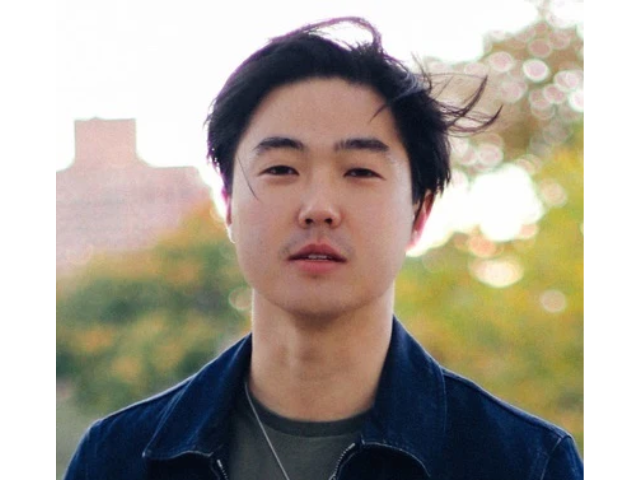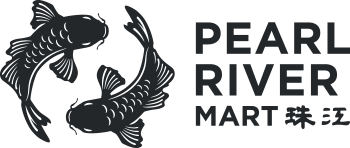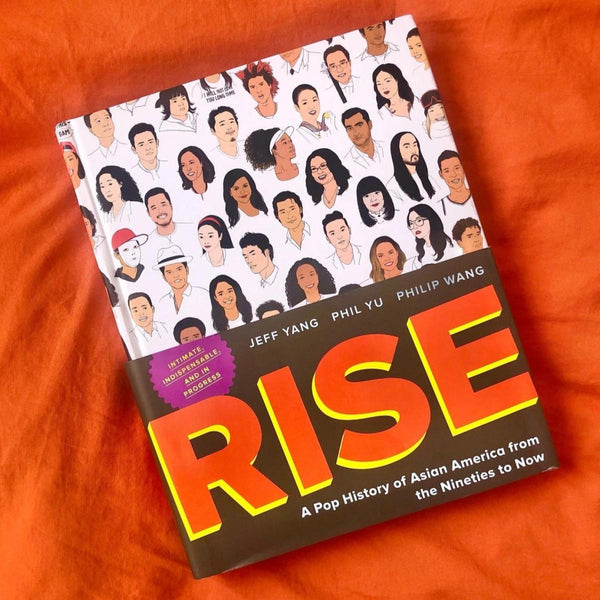
Artist-in-Residence William Yu: Bringing #StarringJohnCho to Life
Who do you picture when you think of an American leading man or lady? Bradley Cooper? Jennifer Lawrence? How about John Cho? Or Constance Wu? What if the stars of movies like Mission Impossible, Captain Marvel, and the Avengers were Asian American? What if Captain America was Captain Asian America?
These are some of the questions screenwriter, creative strategist, and cultural activist William Yu poses in #StarringJohnCho: The Call for an Asian American Lead. His exhibition not only invites you to imagine what an Asian American leading man or woman looks like — it shows you with stunning visuals and an interactive portion that makes you the hero of your own story.
We had the chance to talk to William about how he came up with #StarringJohnCho, his complicated identity growing up as a Korean American in Hong Kong, and how data can support the call for diversity in Hollywood.
Where did you grow up?
Both my parents immigrated from Korea and came to the U.S. for college. They moved around a bunch. I was born in Philly and lived there till age five. Then because of my father’s job, we moved to Hong Kong, where I lived for seven years. Then to Boston after that.
Wow, those are a lot of big changes.
Yes, it was a big shift in my life, going from a quiet suburb outside Philly to a very different, very packed city. And being Korean American in a Chinese community — it was in its own way like being a minority.
So my experience growing up was a different kind of Asian American experience. I was living in an Asian-dominated world. I’m grateful for that and that I didn’t grow up with the same stigmas that other Asian American boys might have. When I moved to Boston from Hong Kong when I was 12, I think was the first time I realized that. I think I had a lot more security in who I was. I didn’t grow up with people assuming things about me. It was only when I came to Boston that I realized there was a different way that people looked at me. That made me uncomfortable although I couldn’t articulate my feelings at the time. That was part of the confusion I felt around my identity when I was growing up.
It’s funny because Korean is actually my worst language. English is my first and Mandarin is my second. My third is probably Spanish. That makes me wonder what it means for my family and relationships that I’m pursuing.
Did you speak Mandarin in Hong Kong? I thought you would speak Cantonese.
In Hong Kong I went to an international school that was bilingual and where everything was taught in both English and Mandarin. My Cantonese is limited to dim sum Cantonese, which is still pretty important. [Laughs] I went to Tufts where they didn’t offer Korean so I decided to brush up on my Chinese since I had been taking Spanish in middle and high school.
How did your feelings about your identity change as you got older and spent more time in the U.S.?
Coming out of high school and college, I became more aware of my identity. Of unpacking certain feelings. I’d have conversations with others about the Asian American experience. I met all types of Asian Americans, from multi-generational to newly immigrated, and while it broadened my viewpoint about the Asian American experience, common themes also bubbled up. That feeling of being in between, as if you don’t belong. Of not wanting to seem too Asian, too white, too American, and what those terms mean. It informed a lot of my opinions about how I felt about myself. I started to think about what I could create that would acknowledge those feelings.
Were you always interested in writing?
Yes, for sure. Professionally I’m kind of all over the place. For my day job I’m creative strategist at Giant Spoon, an ad agency. I feel like working in advertising allows me to be close to creative-minded people. Screenwriting is also something that I’m pursuing.
When we met last year, I think you had just won a screenwriting contest.
Yes, my script, Love You Charlie, won the Asian American International Screenplay Competition, which was sponsored by the Asian American International Film Festival. I grew up as a film and TV nerd and fan. With screenwriting, I felt like I had the most control over what stories I wanted to share. I didn’t want to rely on someone to give me permission to tell a story.
What inspired you to start #StarringJohnCho?
The feeling had been bubbling up for years even before I launched it. In particular, 2016 was an interesting year. The question of diversity was coming into the forefront, but Asian Americans weren’t being included in those conversations about diversity, inclusion, and representation. It was like the peak of white washing that year. It seemed to be back to back to back to back. Ghost in the Shell, Aloha, Doctor Strange — it was a like a concentrated flurry of white washing. Why? It couldn’t just be an accident.
At the same time, I wondered why if you were asked to name Asian American actors, why the number could fit on the fingers on two hands. There was so little representation, so few top-of-mind icons that you could point to, not just as an Asian American but also a non-Asian-American. I wondered how we could bridge that gap.
I realized this was a conversation I had had so many times. And that’s where it always ended — in conversation. In the theoretical and abstract. In an “Oh yeah that would be nice to have more Asian American leads” kind of landing point.
What I wanted to do was physically show this idea to people, for this idea to become more of a reality and to live in the world physically. I realized I also needed an actual proof point. I needed something for people to visually look at and that they also couldn’t refute but it looked so convincing.
I dove into the worlds of research and data points to back up my idea. According to UCLA’s Hollywood Diversity Report, the more diverse films were, the higher their returns were than films that were less diverse. If that’s the case, why aren’t we seeing more leads that reflect that? Films like The Fast and the Furious might have diverse casts, but the people of color are more often in supporting roles. Why weren’t there more Asian Americans in leading roles, driving those financial returns?
I knew that arguing for representation for representation’s sake could only go so far. I needed research and data to disprove that having an Asian American lead was a financial risk and not bankable.
Meanwhile you have people like Aaron Sorkin bluntly saying that there are no Asian American movie stars. You have Chris Rock at the Oscars bringing up three little Asian kids as PriceWaterhouseCoopers accountants. You have all these people laughing at them. It rubbed me the wrong way. All of that funneled into #StarringJohnCho.
Artificial intelligence and machine learning also came into play. I saw deepfake technology being used in negative ways with fake news and celeb porn. Then I saw something, I think it was on Reddit, with Nicholas Cage’s face being put on a whole bunch of different movies. As Indiana Jones, as Amy Adams in Man of Steel. It was hilarious. That was the next step of #StarringJohnCho — putting his face on someone else’s performance.
Fun fact: before I made the movie posters in Photoshop, I had this idea of printing stickers with John Cho’s face and sticking them on posters in subway stations. I did do that — at 2 a.m., at the C line at 72nd street and somewhere around Penn Station. But there actually aren’t that many movie posters in subway stations, and it all took too much time and energy.
How did you pick John Cho?
At first it was instinct. For me he was very top of mind. But I had to make sure my argument was strong. I had four filters as I chose someone. He needed experience as a leading man, critical acclaim, a history of box office success, and a cult following. John Cho has all of that, especially with movies like Harold and Kumar and Star Trek. I did my due diligence and researched other actors, but he was the only one who could satisfy all those requirements.
What do you hope to accomplish with your exhibition? What do you hope your viewers get out of it?
I’m super excited that #StarringJohnCho will be living physically in the world for the first time. With movie posters, you see it and you get it immediately. They’re pieces of art. I’m so thrilled to be able to print them and hang them for people to see.
In terms of goals, I hope that people who visit will feel inspired and open their minds about what a lead role can look like. The whole point of #StarringJohnCho is that Asian Americans can portray and have a breadth of experiences, whether as a superhero in Captain America or a hopeless romantic in You Before Me or someone flawed and insecure in (500) Days of Summer. There are all those realities and types of existences — why aren’t we seeing that in the media we consume?
As much as this project is about John Cho, it’s also not about John Cho. It’s about unpacking the term “Asian American.” Although the subject is Korean American, the project is about a much broader group with many different communities.
What connection (if any) do you see between your exhibition and Pearl River?
What’s interesting to me about Pearl River Mart is its inclusivity and being open to the community at large, and now also really trying to create a grassroots connection with the people coming into the store, inviting them to participate and not just be a passive consumer or audience members.
It’s refreshing to see a storied institution that wants to take things in that direction, shifting just as the definition of Asian American identity is shifting, as well as driving a culture that younger Asian Americans can relate to, wanting to demystify expectations and introduce a new language with which we can define ourselves.
What’s your relationship with Pearl River Mart? Do you have any fond memories of the store?
The store I remember is the SoHo location before it closed. I have memories of walking through it, overwhelmed by how many things there were that can be used to describe the Asian experience. Plus the smells and colors reminded me of living in Hong Kong and trips to Korea. Pearl River can definitely trigger certain nostalgic memories.
What advice would you have for someone who was starting out with screenwriting?
I would say to be consistent with creativity in general. There’s a perception of screenwriting that it manifests itself in moments of inspiration. There’s a romantic notion of writing, like you’re sitting in a room with a glass of whisky and a light bulb goes off and you suddenly start click-clacking on the typewriter. There are a lot of rules to learn to bend and break as you try to write 100 pages of a cohesive story.
I would also say you should consume as much content as you can. Read as many scripts as you can, watch as much as you can. And finding time every day to write something, and knowing the first thing that you write isn’t the last thing. You’ll have to go through multiple revisions. You don’t want to be precious about your work. There’s constant iteration.
What’s the most surprising thing you’ve learned so far?
What’s really heartening, as I do speaking events and travel to different cities, is to see how many people this project has resonated with. People in Germany, Korea, Australia, Hong Kong — they’re all talking about it. My cousin heard about it on a subway in Madrid even before knowing it was me. It’s really heartening to know it resonates beyond the Asian American community.
There are so many more stories yet to be told. There are so many nuances to what it means to be Asian American.
What’s something you’re obsessed with right now? That you’d tell people, “You have to watch/read/listen/eat this?”
I’m a juror for the Los Angeles Asian Pacific Film Festival so lately I’ve been watching all these films. One I’m particularly excited about is called Yellow Rose. The director is Diane Paragas. It’s about a young Filipina American girl who lives in Texas and has dreams of being a singer/songwriter. Then her mother is deported and she herself is undocumented. She has to flee to stay in the U.S. and pursue her dream. Both lead actors [newcomer Eva Noblezada and Broadway veteran Lea Salonga] give really pure and heart-wrenching performances.
Something else I can’t tell enough people about PEN15. It’s my current major obsession. Anna Konkle and Maya Erskine have done such a great job showing what it was like to grow up as a teen in the early 2000s. And also what it was like to grow up as an insecure Asian American kid. It’s done in such a hilarious yet seriously heartwarming way that I don’t think anyone has done before. It’s in the way the show navigates between things that are heartbreaking and empowering at the same time.
#StarringJohnCho: The Call for an Asian American Lead will be on view in our TriBeCa gallery from May 18 through July 7.

